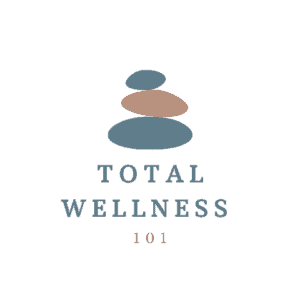Are you looking for a time-efficient and effective way to burn fat and boost your fitness level? Look no further than High-Intensity Interval Training (HIIT). HIIT workouts have gained immense popularity in recent years due to their ability to maximize calorie burn and improve cardiovascular health in a shorter time compared to traditional exercise routines. In this article, we will delve into the basics of HIIT, explore its numerous benefits, and provide a variety of HIIT workout examples suitable for beginners and advanced fitness enthusiasts alike.
What is HIIT?
High-Intensity Interval Training (HIIT) is a form of exercise that alternates between short, intense bursts of exercise and periods of active recovery or rest. These intense intervals push your heart rate up, followed by brief recovery periods to catch your breath before repeating the cycle. This pattern of high-intensity exertion and recovery is what makes HIIT workouts so effective for fat burning and overall fitness improvement.
Benefits of HIIT
1. Increased Calorie Burn: HIIT workouts are known for their ability to torch calories. The intense bursts of activity coupled with short recovery periods keep your metabolism elevated, leading to an increased calorie burn during and even after your workout.
2. Time Efficiency: One of the biggest advantages of HIIT is its time efficiency. A typical HIIT session can range from 15 to 30 minutes, making it an excellent choice for those with busy schedules. In a short amount of time, you can achieve the same or even greater benefits compared to longer, steady-state workouts.
3. Fat Loss and Muscle Retention: HIIT not only helps burn fat but also preserves lean muscle mass. This is crucial for achieving a toned physique while shedding unwanted pounds.
4. Improved Cardiovascular Fitness: HIIT workouts significantly enhance cardiovascular endurance. The alternating periods of high intensity and recovery force your heart to adapt and become more efficient at pumping blood and oxygen to the muscles.
HIIT Workout Examples
Now let’s explore a variety of HIIT workout examples that cater to different fitness levels and preferences:
1. Bodyweight HIIT:
a. Tabata Squats: Perform 20 seconds of squats followed by 10 seconds of rest. Repeat for a total of 4 minutes.
b. Mountain Climbers: Do 30 seconds of mountain climbers followed by 15 seconds of rest. Repeat for 5 minutes.
2. Cardio-Based HIIT:
a. Jumping Jacks and Burpees: Alternate between 45 seconds of jumping jacks and 30 seconds of burpees. Repeat for 10 minutes.
b. Sprint Intervals: Find a flat stretch of land or use a treadmill. Sprint at maximum effort for 20 seconds, followed by 40 seconds of walking or light jogging. Repeat for 15 minutes.
3. Equipment-Based HIIT:
a. Kettlebell Swings: Perform 40 seconds of kettlebell swings followed by 20 seconds of rest. Repeat for 8 minutes.
b. Battle Rope Slams: Do 30 seconds of battle rope slams followed by 15 seconds of rest. Repeat for 5 minutes.
Proper Form and Safety Precautions
While HIIT workouts offer numerous benefits, it’s crucial to prioritize safety and proper form:
1. Warm-Up: Always begin your HIIT session with a dynamic warm-up to prepare your muscles and joints for the intense activity ahead.
2. Gradual Progression: If you’re new to HIIT, start with shorter intervals and gradually increase the duration and intensity as your fitness level improves.
3. Listen to Your Body: Pay attention to your body’s signals and modify or stop exercises if you experience pain or excessive fatigue.
4. Stay Hydrated: Drink plenty of water before, during, and after your HIIT workout to stay hydrated.
Tips for Beginners
If you’re new to HIIT, here are some tips to help you get started:
1. Start Slowly: Begin with shorter workouts and gradually increase the duration and intensity as your fitness level improves.
2. Choose Exercises Wisely: Select exercises that you enjoy and can perform with proper form. This will help you stay motivated and minimize the risk of injury.
3. Rest and Recover: Allow adequate rest and recovery time between HIIT sessions to avoid overtraining and maximize the benefits.
4. Seek Professional Guidance: Consider working with a certified personal trainer like us here at Total Wellness 101 to ensure you’re performing exercises correctly and to receive tailored guidance based on your fitness level and goals.
High-Intensity Interval Training (HIIT) is a highly effective way to burn fat, boost cardiovascular fitness, and improve overall health in a shorter amount of time. Whether you prefer bodyweight exercises, cardio-based routines, or equipment-based workouts, there’s a HIIT variation suitable for everyone. Remember to prioritize safety, maintain proper form, and gradually progress your intensity and duration. With consistency and dedication, you’ll experience the remarkable benefits of HIIT while achieving your fat loss and fitness goals.
Recent Posts
In the pursuit of professional success, the modern working professional often finds solace in a cup of coffee or energy drink. Caffeine, the world's most widely consumed psychoactive substance, has...
Strategies for Sales Professionals to Reduce Back Pain and Injuries
In the fast-paced world of sales, professionals often find themselves navigating through long hours, client meetings, and constant travel. Amidst the pursuit of closing deals and meeting targets, the...

